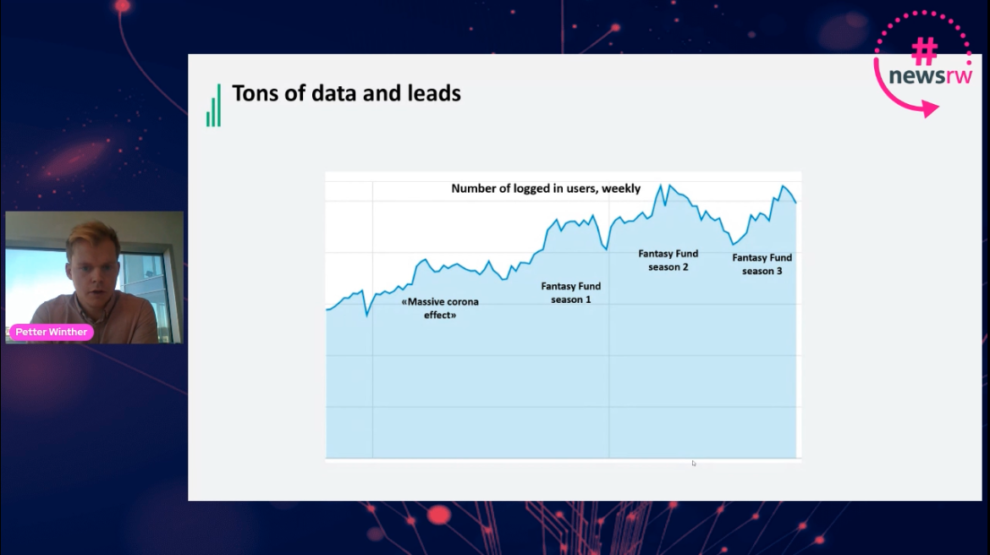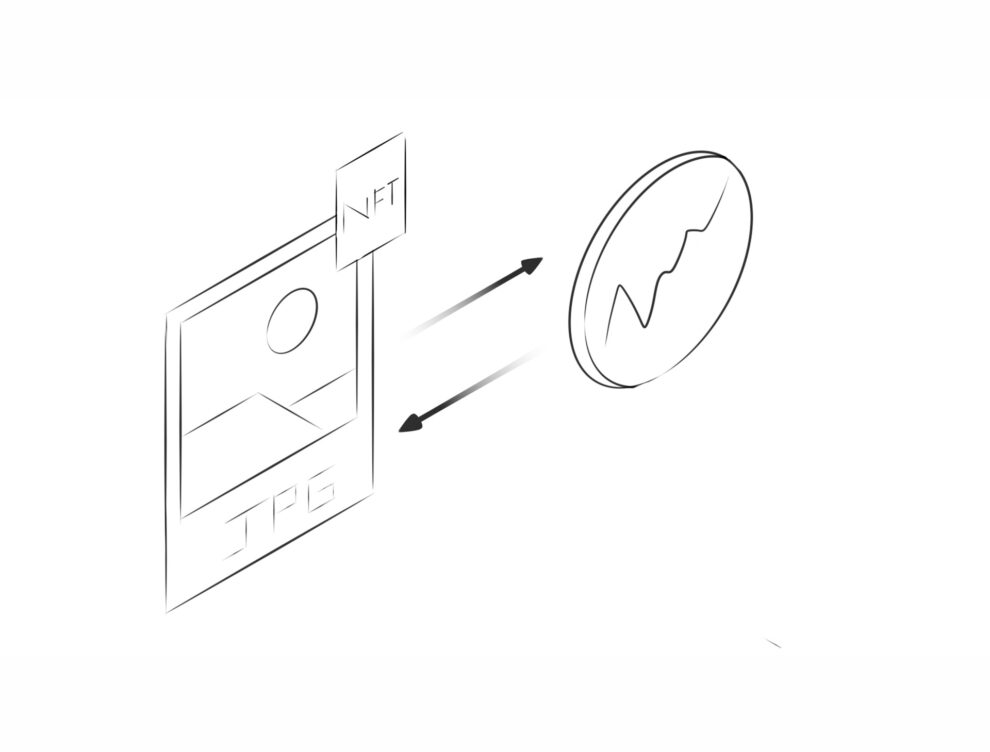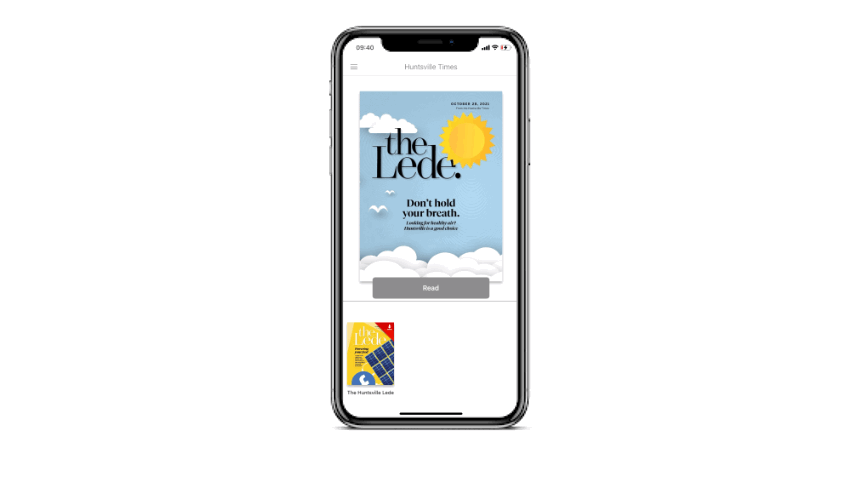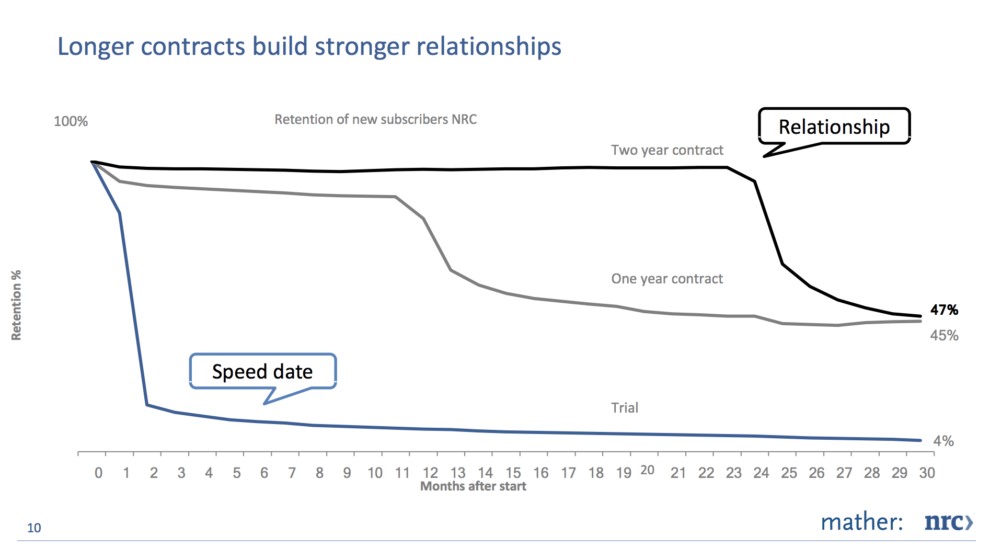4 Cases of Innovation in Audience Revenue Growth
Finding the right way to diversify revenue streams can be a struggle for publishers. But as they are becoming hubs of innovation, publishers are in a great place to explore new innovative ways to create audience revenue. Taking inspiration from this week’s Newsrewired summit, we explore some of the top cases in the industry on how publishers have used innovative ways to create audience revenue.
Dagens Næringsliv taking gamification to the next level
At Newsrewired, Petter Winther of Dagens Næringsliv (DN) uncovered how Norway’s oldest business newspaper has innovated to attract new, younger readers. In recent years, DN had spotted a trend of a large number of small-scale investors joining the Oslo Stock Exchange. After conducting interviews with audience bases (something that Winther added is his top tip for publishers looking to innovate) DN found that young readers were interested in investing, yet didn’t necessarily have the relevant knowledge. This presented a clear opportunity for a business newspaper DN.
DN launched “Fantasyfond”, a gaming universe on their platform along developed by Norkon. Registered users were able to select a minimum of 5 stocks from the Oslo Stock Exchange in the game. As a way of engaging young people and getting them to start playing in 2 minutes, registration was kept free.
Registered users then created their own fund by choosing stocks for 1 million Norwegian krones (fantasy of course!). Each week, players competed against each other. The fund boasting the highest return being named as the fund of the week. After 10 weeks of battle, an overall winner was then crowned the champion.

The success of the platform went beyond DN’s wildest imagination, with their original aim of 10,000 registered users being reached within 10 days of Fantasyfond’s launch. In total, the first season of the game attracted 21,000 players during its 10-week period. 55% of users came from the under-35 demographic, and 20% of the players were 25 or younger. These were also the most active playing group.
Fantasyfond’s success has continued with the game attracting over 25,000 players for its second series, with its’ third series currently ongoing. Over the course of its 3 seasons, Fantasyfond has generated approximately 28,000 new registered users for DN. This is a great pool of leads that their sales team works to convert with subscriber-only stock market webinars and subscriber-only leagues.
Quartz and the New York Times bring NFTs to the world of news
Looking ahead to the future, the digital world as we know it will become outdated and resemble the Nokia 3310. At the Digital Growth Summit 2021, Steven van Belleghem stated that he expects the news industry to embrace the power of NFTs, and this is in fact something that some publishers have already started.
Quartz, who also joined Newrewired, became the first news organisation to sell a piece of text journalism as an NFT. Priding themselves on their advanced digital nature, Quartz sold a digital representation of their news article which announced the sale of their first ever NFT. This was sold along with hidden details. These included the email addresses and twitter handles of the authors and other types of metadata. After several days of bidding, the article was sold for $1600 and its proceeds were given to charity.

Earlier this year, print media entered the game. The New York Times sold their first ever article published as an NFT. Much clamour was seen around the sale, and the article, a column about NFTs written by Kevin Roose, was sold for around $560,000. This sum is of course significantly more than Quartz sold their NFT’s for and represents a serious revenue opportunity for publishers.
It should be noted that the proceeds of the New York Times NFT were also given to charity. Beyond owning a PNG of the article, the lucky buyer also received a congratulatory voice memo from The Daily podcast team and was mentioned in an article about the sale of their first ever NFT. There are clear signs that there is significant value to be extracted from the world of NFTs. Perhaps this is a trend we will begin to see in the more distant future.
The Daily Telegraph and Advance Local revolutionise their editions
In a world where people are inundated with news, the need for a daily briefing and a bundle of news that can set you on course for the day, there is no better product than an edition. Our original research from 2018 found that 49% of people have a preference for edition-based publishing.
Editions don’t have to be an exact copy of the newspaper of the day. More digitally designed formats are available. US Publisher Advance Local chose to reinvent their local news offering in Huntsville, Alabama with Twipe Next Gen Technology. By creating their new edition “The Lede” the US Publisher goes beyond the stories of the day delivered in their traditional paper, the Huntsville Times. Inside The Lede, readers can access the most important stories for the Huntsville area, some of which are exclusive to the edition! This digitally designed paper was only released in September, but is already a great addition to the Advance Local brand. Not only has it helped Advance to modernise the image of local news, but it enables them to reach a new audience. Stay tuned as we cover this example in an upcoming case study.

The Daily Telegraph also innovated their digital edition app with Twipe technology. With their aim of reaching 1 million paid subscribers by 2023, the British publisher want their app to be the best place to consume their journalism. After quickly realising that their edition-based readers were amongst their most habitual, the decision to base their new app around the digital edition and integrate live news as a separate feature was a no brainer. Their subscriber first strategy has clearly been effective. In February 2020, the Daily Telegraph had 427,488 subscribers, of which 220,891 were digital, but as of September 2021, the Telegraph had 494,974 digital subscribers!
It is important to remember that a newsletter is also a form of finite, edition-based product, and it has been well documented that their consumption is on the up. An example comes from NRC who saw a 26% increase in habitual readers after 6 months exposure to JAMES personalised newsletters. The future potential for editions to drive revenue is huge and is something that publishers can easily leverage.
NRC and De Telegraaf stand-up for long-term relationships
Whilst it may not sound like cutting edge technological innovation, analysing existing subscription offerings could be key to creating audience revenues. An example we have explored many times at Twipe, as it really is a case all publishers can learn from, is that of Dutch publishers NRC and De Telegraaf.
Simply, the publishers chose to view their customers as part of a real reader relationship as opposed to a one-night stand. Commitment phobes may dislike the idea, but NRC and De Telegraaf chose to go for long-term relationships and replaced their subscription offerings to instead being contracts of 1, 2 or 3 years. This has led to a 66% growth in subscriptions and a 24% decline in marketing costs. NRC have continued to experiment with new ways to maximise their offering.

We have also seen success for longer-term commitments in the USA. The Boston Globe recently extended the period of their introductory offer for digital subscribers from 4 weeks to 6 months. This was brought about after the success of a recent experiment where the Globe decided to host a 1-day sale. New subscribers were able to buy 6 months of access for just $1. Positively, 1724 news subscribers took advantage of the offer and their conversion rate into subscribers was 10 times higher.
Clearly, there is something to be said for the effectiveness of long-term contracts, especially since these give subscribers more time to build the habit of reading the news. After all, it is important to remember that it takes 66 days to form a habit, something which is vital for retention efforts.
Other Blog Posts

Stay on top of the game
Join our community of industry leaders. Get insights, best practices, case studies, and access to our events.
"(Required)" indicates required fields

